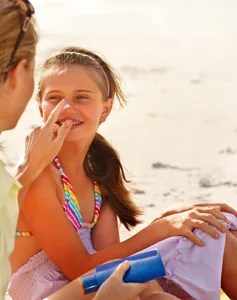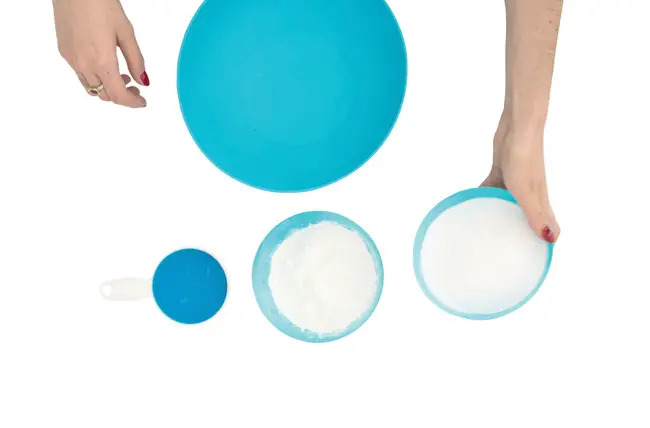
Summer’s here, and that means plenty of outdoor fun for you and your kids. Yet warmer weather and more active days require some added safety precautions. By following these simple tips, you can help your family enjoy the summer – injury free!
Bites and Stings
Dr. Jennifer Trachtenberg, pediatrician at Mount Sinai Medical Center, ally of Dr. Mehmet Oz, and mom of three, advises parents to be especially careful when applying insect repellent. In her new book, The Smart Parent’s Guide to Getting Your Kids Through Check-ups, Illnesses, and Accidents, Trachtenberg advises parents to “never apply insect repellent to babies under two months of age, and only use it when absolutely necessary on children under two years old.”
Apply repellent only once, because DEET (what most repellents are made of) “is absorbed into your child’s skin, and reapplying it can increase the odds of toxicity.” Make sure you don’t use products that combine sunscreen and repellent because sunscreen will need to be reapplied. It’s wise to be weary of so-called “natural” repellents. “Natural doesn’t necessarily mean safer,” says Trachtenberg. “One exception is oil of lemon eucalyptus, as some research has found that it repels bugs just as effectively as low concentrations of DEET.”
Trachtenberg also suggests that parents don’t “make your kids bug magnets! Avoid using scented soaps, lotions, and hair care products, and don’t dress your tyke in brightly colored, flowery clothes.” Also remember to steer your children away from gardens and standing water.
If despite all your preventive efforts your child still gets stung, remove a visible stinger from skin by gently scraping it off horizontally with a credit card or your fingernail. If your child breaks out in hives or is in significant pain, call your doctor. If your child exhibits any signs of labored breathing, call 911 immediately. Bug allergies can be life threatening.
Sun
While it’s generally safe to put sunscreen on babies after six months of age, it’s best to keep them out of direct sun to begin with, recommends Trachtenberg. “Dressing babies in loose-fitting clothes that provide full coverage (meaning long pants and long-sleeved shirts) and a brimmed hat is the best way to avoid sunburn.” When it’s simply too hot, you will have to use sunscreen – so look for one that has an SPF of at least 30 and UVA/UVB protection. Sunscreen needs to be reapplied about every two hours, particularly after going in the water. Remember to keep baby in the shade whenever possible, and limit sun exposure during the peak intensity hours, between 10am and 2pm.
Heat
Whenever high heat and humidity reach critical levels, any activities that last 15 minutes or more should not be too intense. Before prolonged physical activity (think baseball, soccer, or any kind of running), your child should be well hydrated. During the activity, make sure your child drinks periodically, even if he is not thirsty. That means at least five ounces of cold tap water or a flavored sports drink every 20 minutes for a 90-lb. child, or nine ounces for an adolescent weighing 130 lbs. Keep in mind that practices and games played in the heat should be shortened with more frequent water breaks, so speak up and discuss this with other parents and coaches.
Pool Safety
Drowning can happen in a matter of seconds, and a child should always be supervised when in the water – no exceptions! Whenever infants or toddlers are in or around water, an adult should be within arm’s length, providing “touch supervision.” In addition, the American Academy of Pediatrics recommends that parents avoid inflatable swimming aids such as “floaties.” They are not a substitute for approved life vests and can give children a false sense of security. It’s wise to remember that children may not be developmentally ready for swim lessons until after their fourth birthday, so swim programs for children under 4 should not be viewed as a reliable way to decrease the risk of drowning.
|
Keep Safe During Play The American Academy of Pediatrics offers the following recommendations for outdoor summer play:
On the Playground • The playground should have safety-tested mats or loose-fill materials (shredded rubber, sand, wood chips, or bark) maintained to a depth of at least nine inches. The protective surface should be installed at least six feet (more for swings and slides) in all directions from the equipment. • Equipment should be carefully maintained. Open “S” hooks or protruding bolt ends can be hazardous. • Swing seats should be made of soft materials such as rubber, plastic or canvas. • Never attach – or allow children to attach – ropes, jump ropes, leashes, or similar items to play equipment; children can strangle on these. • Make sure metal slides are cool to prevent children’s legs from getting burned.
Bicycles • Take your child with you when you shop for the bike, so that he or she can try it out. The value of a properly fitting bike far outweighs the value of surprising your child with a new one. • Buy a bike that is the right size, not one your child has to grow into. Oversized bikes are especially dangerous. • Your child needs to wear a helmet on every bike ride, no matter how short or how close to home. Many accidents happen in driveways, on sidewalks, and on bike paths, not just on streets. • When purchasing a helmet, look for a label or sticker that says the helmet meets the CPSC safety standard. • A helmet should be worn so that it is level on the head, not tipped forwards or backwards. The strap should be securely fastened, and you should not be able to move the helmet in any direction. If needed, the helmet’s sizing pads can help improve the fit.
Skateboards, Scooters, In-line Skates, and Heelys • Children should never ride skateboards or scooters in or near traffic. • All skateboarders and scooter riders should wear a helmet and other protective gear; wrist guards are particularly important. • While in-line skating or wearing Heelys, be sure to wear appropriate protective equipment and only skate on designated paths or rinks, not on the street.
For more summer safety information, visit www.aap.org.
|





















